A recent trip to Cuba on a National Geographic “people to people” tour left me with admiration for a small country that has overcome staggering obstacles.
Cuba deserves to be considered a profile in courage for surviving the 50 year old US trade embargo; near economic collapse in 1992 when Russia, Cuba’s main trading partner, abruptly ended all trade to Cuba; 600 attempts on Fidel’s life; and periodic hurricane damage to Cuba’s infrastructure.
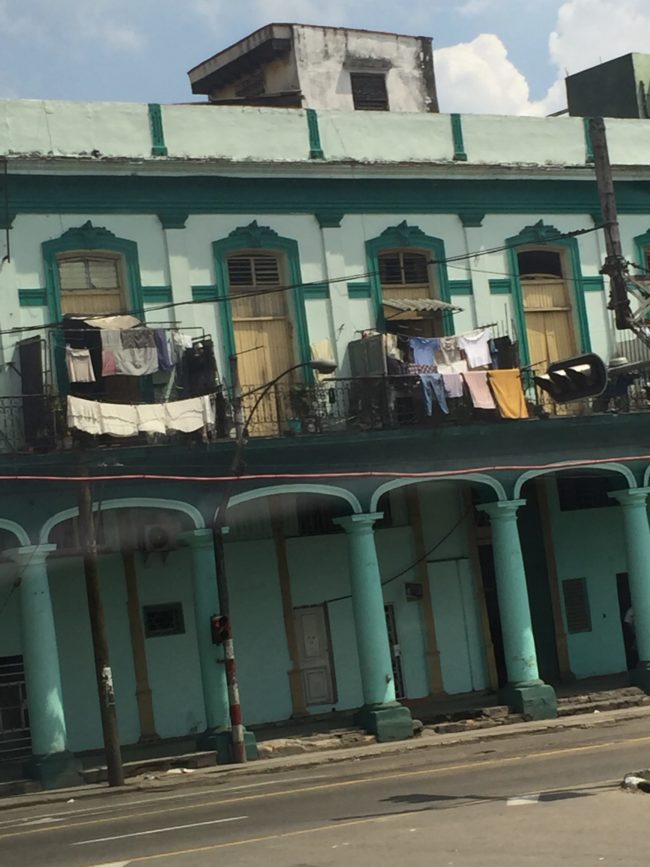
Havana residence atypical in its freshly painted exterior
What makes the Cuban people so resilient?
Credit must be given to their Socialist government, which stresses community over the individual, along with strong family ties where three generations often live under one roof. During the severe economic crisis of 1992, when trade with Russia came to a stand still overnight, Cubans supported one another, exchanging survival tips like frying banana skins, using battery fluid for hair dye, and teaching one another how to ride bicycles. During this period the average Cuban lost 20 pounds.
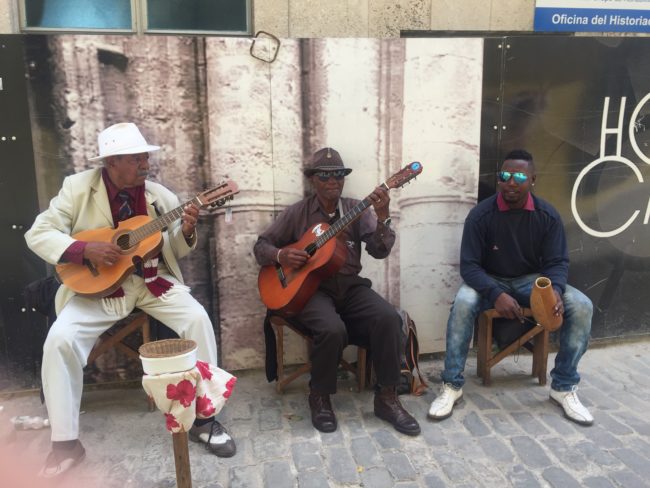
Street musicians are prolific in Cuban cities and uniformly excellent
Today tourism is boosting the Cuban economy while posing problems for the Socialist dream. As one Cuban told me, “We don’t want to become another Cancun.” This seems like an unlikely scenario given the tight government control over businesses. Restaurants, known as paladars, are privately owned but require a government license. The same applies to most hotels and other small businesses.
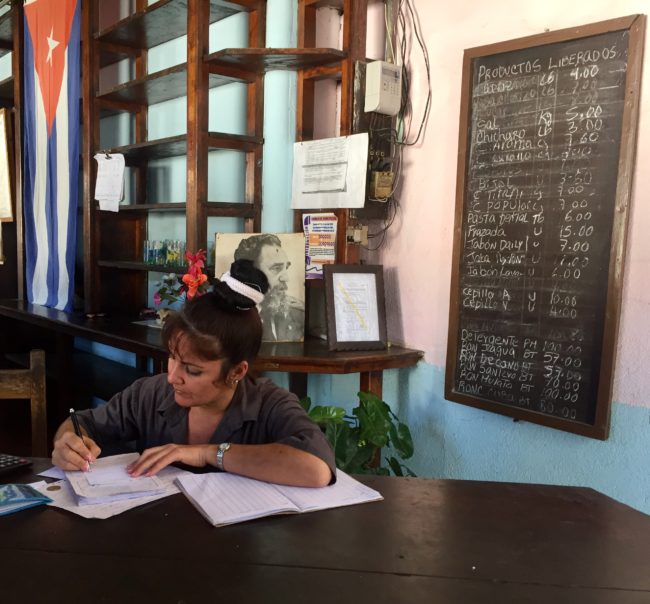
Cubans receive food rations which are redeemed at ration stores like this one—note the bare shelves
While Cubans are given free housing, free education and free medical care, they have little access to modern conveniences. A black market thrives on luxury goods brought into Cuba from Cubans who visit family in Florida. As more Cubans travel back and forth to the states, returning with conspicuous flat screened TV’s and the like, it’s unknown how long the black market will escape government interference.
Other Cubans find ways to raise a little money without reporting it, like our tour’s bus driver who proudly showed me photos of his 500-pound pig, which he’ll sell for its pork meat.

Dr. Marta Nunez, University of Havana, specializing in gender studies
As a feminist I was curious about the role of women in contemporary Cuba. From Dr. Marta Nunez, Professor of Sociology at the University of Havana, I learned that feminism has met with resistance given Cuba’s machismo culture.
While a 1991 law mandated that every Cuban university include a women’s studies program, everyday Cuban life bears little evidence of female gains. Because most Cuban men refuse to practice birth control, typically women carry condoms in their purses, while men see it as unmanly to submit to a vasectomy.
At home the average Cuban male resists sharing in household and childcare chores. A 2004 paternal law states that either the mother or the father can take a six-month leave following the birth of a child. To date barely any men have chosen this path. These factors have contributed to Cuba’s growing divorce rate largely initiated by women.
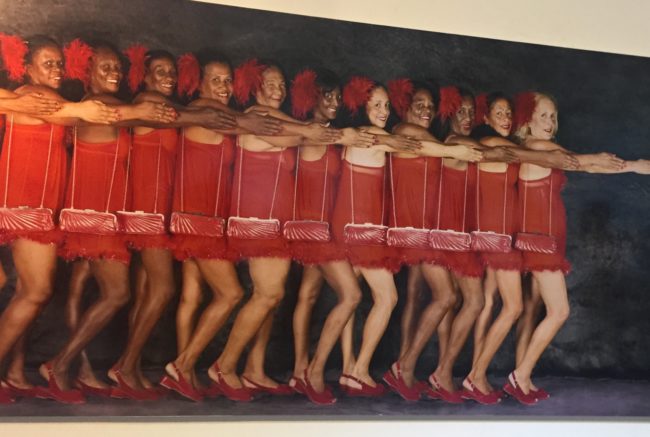
An art gallery photo showcasing older women
On the positive side, Cuban women demonstrate strong wills and are able to age naturally in a country too poor for plastic surgery and other artificial ways of pushing back the clock. Art exhibits are replete with images of older women, celebrating their wisdom and aging bodies.

A 98 year old woman dancing up a storm at a community center party
At a community party I watched elderly women freely enter into the festivities as they danced and smoked cigars with abandon. Women’s wisdom is celebrated in the Cuban Santeria religion where older women tell fortunes from reading cowrie shells.
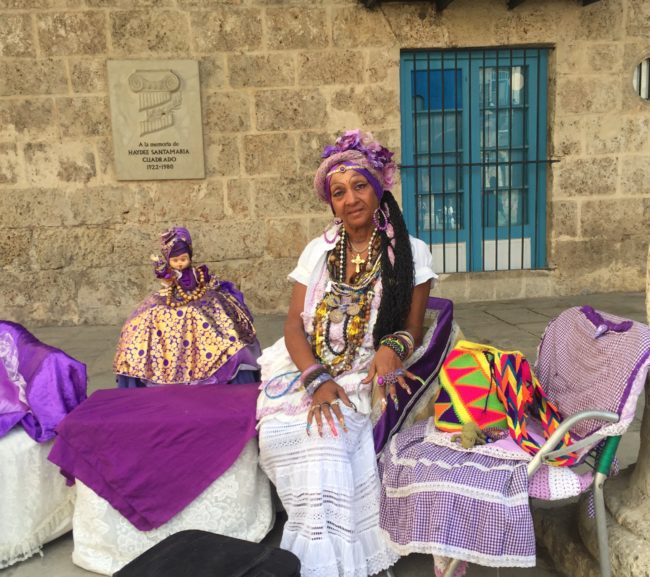
Santeri fortune teller at an Havana plaza
While young people are leaving Cuba in record numbers in search of a higher standard of living, those who remain are committed to improving their society. I spoke with a 34-year-old TV journalist who is fighting against government control of the media. She is encouraged by Raul Castro’s visits to local villages where he is holding community forums to hear the concerns of average Cubans.

Cuban school children at a country school
In spite of their meager life style where food supplies are limited and where living conditions are crowded and without modern amenities, Cubans are warm and friendly and proud of their schools and health care. The arts are celebrated in Cuba. Primary and secondary schools that specialize in music, art, and dance are sprinkled throughout the country. Art performances are very affordable for the average citizen. I paid $30 to attend a modern dance performance while Cubans paid $3 for the same show.
As I flew home from Cuba, my warm memories ushered in an impetus to do all I can to fight for an end to the Cuban embargo and the ridiculous Cold War mentality it represents. Viva La Cuba!

A non-government poster protesting the US embargo